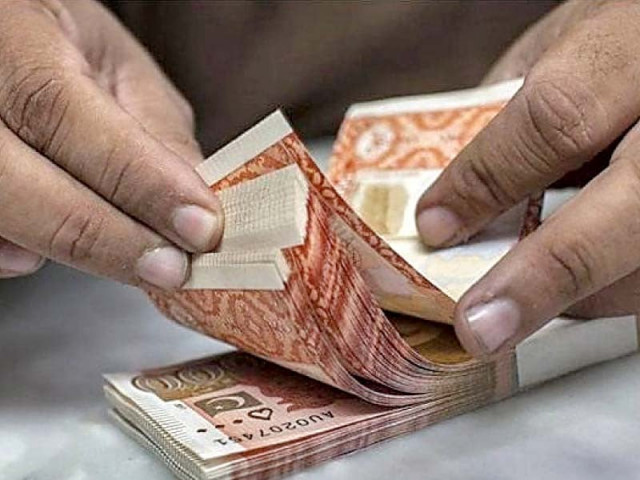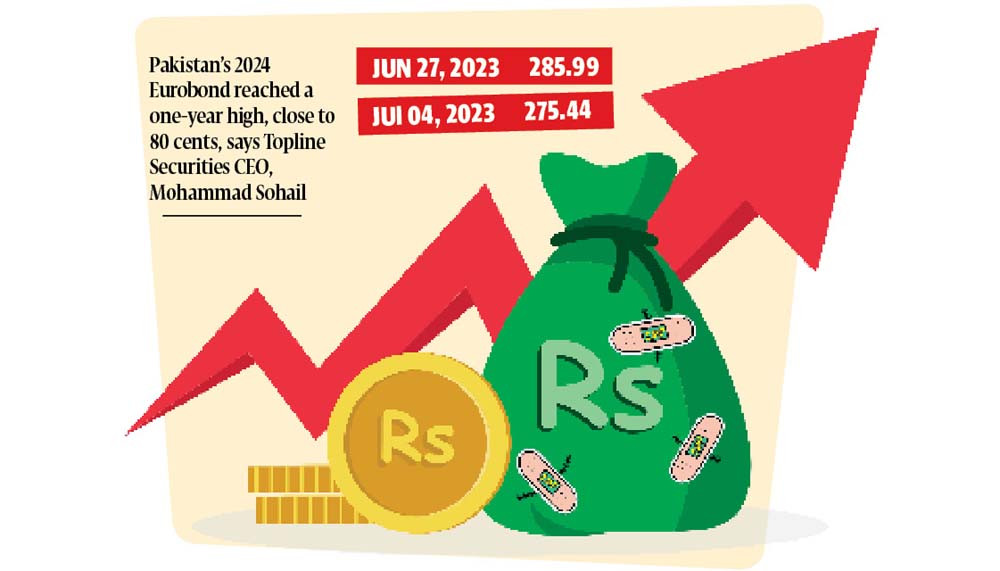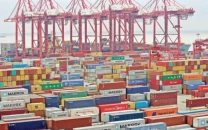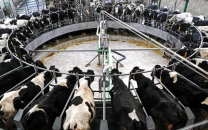IMF boosts rupee, Eurobonds rally, and gold prices decline
Gains 3.83%, equivalent to Rs10.55, in a single day – largest increase in 7 weeks

The Pakistani currency witnessed a strong rebound as the International Monetary Fund (IMF)’s new loan programme defended its value, causing speculators to suffer losses. The rupee gained a significant 3.83%, or Rs10.55, reaching a four-month high at Rs275.44 against the US dollar in the inter-bank market on Tuesday.
In the open market, the currency also experienced a jump of 3.57%, or Rs10, reaching Rs280 against the greenback. However, the closing price was significantly lower compared to Finance Minister Ishaq Dar’s claim of Rs270-272 against the dollar in the retail market just a day ago, despite the market largely being closed during the day.
Furthermore, Pakistan’s global Eurobond continued its astonishing rally for the third consecutive working day, while gold prices further decreased following the signing of the staff-level agreement (SLA) between Pakistan and the IMF for a new nine-month loan programme worth $3 billion.
Tuesday marked the first trading session in both the inter-bank and open markets after the one-week Eid holidays, weekly offs, and annual offs. It was also the first session of the new fiscal year 2024. Pakistan secured the IMF lifeline during the holidays.
Experts predict that the first tranche of the IMF loan, expected to be around $1-1.25 billion, will be received this month (July 2023), along with additional loan inflows of $3-5 billion from other multilateral creditors and friendly countries over the next 12 months. These inflows will help rebuild foreign exchange reserves to approximately $9 billion and support the rupee against the dollar.
Despite the reserves recovering by over $500 million and standing above $4 billion at present, they still remain critically low, providing only one-month import cover to the nation.
Experts project that the currency may recover to Rs270-275/$, but they anticipate that the massive recovery will be temporary, lasting for a brief period of around two weeks. The reopening of all imports, as announced by the central bank, is expected to increase the demand for foreign currency and put pressure on the local currency.
Previously, the currency had experienced a historic drop of 28% (Rs81), falling to Rs286 against the dollar in the previous fiscal year 2023, which ended on June 27, 2023.
The slump in FY23 was largely attributed to persistent delays in the revival of the $7 billion IMF programme, which ended prematurely on June 30, 2023.
Before signing the new IMF deal, the government took steps to address the concerns raised by the IMF regarding the functioning of the domestic currency market. The central bank reopened all imports last week, fulfilling another condition for the programme, and adjusted the FY24 budget in line with the recommendations of the Fund.
Arif Habib Limited (AHL) reported that the 3.83% gain, equivalent to Rs10.55, in a single day in the domestic currency in the inter-bank market was the largest increase in the past seven weeks. The previous highest gain of Rs13.86, or 4.86%, was recorded on May 12, 2023.
Exchange Companies Association of Pakistan (ECAP), President, Malik Bostan stated, “The speculators have lost the game. The Pakistani rupee has made the much-needed recovery from being undervalued by the speculators.” Bostan anticipates that the currency will recover to Rs250/$ in the near future if foreign currency inflows remain high, including workers’ remittances, export earnings, foreign portfolio investment in local capital markets, and foreign direct investment (FDI) in various sectors of the domestic economy.

design: mohsin alam
Bostan also mentioned that Pakistan is set to receive multi-billion-dollar investments from China under the second round of China-Pakistan Economic Corridor (CPEC) projects.
According to him, the local currency is still far from its fair value of Rs245/$ when measured on the global matrix using the real effective exchange rate (REER), which is the value of the local currency against a basket of currencies of global trading partner countries. In May 2023, the rupee stood undervalued at 87.14 on the REER index, with the rupee-dollar exchange rate closing at Rs285.46/$ on May 31, 2023.
The fair value of the rupee against the dollar is considered to be in the range of 295-105 on the REER index.
Between 2019 and 2023, the central bank largely maintained the REER at an average of 95 on the index, suggesting that the currency still has room to recover to Rs245-250/$ if the supply of foreign currency remains equal to or higher than the demand in the economy.
The currency hit an all-time low at Rs299/$ in May 2023 due to political drama and the prevailing law and order situation.
Meanwhile, Pakistan’s Eurobonds continued their rally for the third consecutive working day. The 10-year global bond, worth $1 billion and maturing in April 2024, reached a one-year high on Tuesday. This uptrend suggests that the risk of default has subsided in the short to medium run (July-March) of FY24.
Topline Securities, CEO, Mohammad Sohail mentioned on his Twitter handle that the price of Pakistan’s 2024 Eurobond reached a one-year high, close to 80 cents.
The bond price had plummeted to $51.5 cents due to the high risk of default on foreign debt obligations before the new IMF deal was achieved last week.
On the other hand, gold prices in Pakistan continued to decrease, dropping by Rs2,200 to Rs205,000 per tola (11.66 grams). In May, gold had reached a record high of Rs240,000.
Published in The Express Tribune, July 5th, 2023.
Like Business on Facebook, follow @TribuneBiz on Twitter to stay informed and join in the conversation.


















COMMENTS
Comments are moderated and generally will be posted if they are on-topic and not abusive.
For more information, please see our Comments FAQ